But the modern measuring instruments have the ability to measure more than one parameter. LCR meter is one such versatile measuring instrument. An LCR meter, as the name has it, is an equipment used to measure three different parameters – inductance (L), capacitance (C), and resistance (R). It eliminates the need for carrying multiple reading equipment. Besides, the LCR meter shows accurate measurements of these parameters. Not all LCR meters come with the same accuracy and functions. It varies depending on the type of LCR meter and the specific model you opt for. Below are the primary things you need to check before choosing the best LCR meter that suits your needs. LCR Meter Type: Digital Vs. Analog: Without a doubt, you should go with the digital LCR meter. Although analog meters are cheaper, it is very difficult to get precise readings. On the other hand, digital LCR meters are easier to use. You can take measurements faster and the readings are precise. Frequency Selection: This is an individual choice and depends on the frequency of the components you will be testing. Most electrical components run between the frequencies of 100 and 10,000Hz. We recommend you go with models that have a frequency range between 100Hz and 100KHz. This covers the frequency of most electrical components. Additional Measurements: Any LCR meter will help you measure inductance, capacitance, and resistance. But, some models will show readings of additional parameters. The other common parameters you may need to measure are dissipation factor, quality factor, and ESR (equivalent series resistance). While these are the primary features you need to check while buying the best LCR meter, there are other features that add value to your money. We highly recommend you check our “Buying Guide” section to know the complete list of such features. We understand if you don’t want to spend time reading all those features. So, we have listed below the Best LCR Meters based on the features. You can choose one that suits your needs and fits the budget.
5 Best LCR Meter of 2023
5 Best LCR Meter of 2023: Reviews
1. DER EE DE-5000 Handheld LCR Meter
With the dual-display screen, you can see secondary parameters as well apart from the primary ones. The secondary parameters include phase angle, Q factor, D factor, and ESR. It saves you time and eliminates the need of using other reading tools. The LCR meter offers a wide range of frequencies. You can choose any frequency in the range of 100Hz, 120Hz, 1 kHz, 10 kHz, and 100KHz. With these frequencies, you will be able to measure the parameters of a wide variety of electrical components. Both the primary and the secondary screens have a display count of 19,999. Even if the parameters you are measuring are high, this display count will be able to display the reading. Besides, with the backlit display, you can easily see the readings. The control panel is user-friendly and comes with buttons. The buttons to navigate to the settings for measuring the most common parameters are placed at the top. They are followed by buttons for additional parameters. The kit includes alligator clip leads and SMD tweezers. Both come with an adaptor. But, the leads for alligator clips are very short. So, you may need to get longer leads separately. Pros
Measures wide number of parameters Wide range of test frequencies Comes with a dual-display – both have a high display count Backlit display Simple user interface and easy to navigate
Cons
Poor customer service Some instances of customer complaints where it stops working after a few months
2. Extech 380193 LCR Meter
Extech’s 380193 LCR meter features the standard dual display. With this, you can simultaneously see the readings of primary and secondary parameters without changing any settings. The secondary parameter includes heat factor and dissipation factor. The display has a backlit feature using which you can easily see the readings even when it is dark. This LCR has a maximum frequency of 1KHz. This should suffice to measure the parameters of the complete lifecycle of any electronic component. Besides, you can also get other valuable data such as maximum and minimum values. You also have the option to hold the data by pressing the Hold button. You can also toggle between primary and secondary parameters by pressing the buttons. One of the best features of this LCR meter is that you can transfer the data to your PC. You can view, print, or export the data to a spreadsheet and analyze the data. The kit includes test leads, a 9V battery, software, a protective holster, and necessary cables. Pros
Decent test frequency – up to 1KHz Dual display – Primary and secondary Backlit display Multiple functionalities Data storage and transferring
Cons
Secondary parameters include only heat and dissipation factor Frequency range can be improved
3. Peak Atlas LCR45 LCR Meter
Unlike the other LCR meters on our list, this meter has only a single display screen that displays primary parameters The primary parameters include inductance, capacitance, and resistance, along with impedance and admittance. The LCR meter has an enhanced measurement resolution of 0.2uH, 0.2pF, and 0.2Ohms. This LCR meter has the highest frequency range on our list with the maximum frequency being 200KHz. It is needless to say that you can use it to measure the parameters of all electronic components. The LCR meter features only two buttons. One button for turning on the device and entering the menu. The other button for selecting the settings and turning off the meter. You may find it difficult to navigate the settings in the initial days as this meter does not have settings buttons. When it comes to the functions, the LCR meter offers you the hold option and the option to toggle between automatic and manual components. The kit includes detachable micro hooks and 2mm compatible probes. Pros
High-frequency range High measurement resolution – 0.2uH, 0.2pF, and 0.2Ohms Primary parameters include impedance and admittance Hold and automatic/manual toggle functionality
Cons
No secondary parameters or screen Difficult to navigate
4. B&K Precision 880 Handheld LCR Meter
The Precision 880 LCR meter features a dual-screen. With the 40,000 primary screens, you can see even large values of the parameters capacitance (C), inductance (L), and resistance (R). The secondary screen comes with a modest 10,000 counts showing parameters such as dissipation factor, heat factor, DCR, ESR, and Theta. With a maximum frequency of up to 100KHz, you can work with almost all electrical components. Besides, it has an accuracy of up to 0.1%. You will get the most accurate readings of the parameters. You do not have to change the settings to take the readings of secondary parameters. The meter will automatically measure and display the readings and save you a ton of time. The LCR meter has a total of 9 buttons, out of which one is the Power button. You also have the Hold option. The readings won’t disappear from the screen after taking the measurements. The kit comes with all the necessary accessories that you will need to measure the parameters. You will have to connect the LCR meter to an electrical outlet to power the device. Pros
Accuracy of up to 0.1% Good frequency range Measures wide number of parameters 40,000 primary display count Multiple functions
Cons
No backlit display Secondary screen display count is less – 10,000 counts
5. LCR Research Elite2 LCR Meter
The Elite2 LCR meter features a unique tweezer-style design. It makes it very easy for you to hold the meter while measuring the parameters. But, the downside is that it has a small display. The LCR comes with four test frequencies – 100Hz, 120Hz, 1KHz, and 10KHz. You will be able to measure the parameters of components that operate within the frequency range. With the Elite2 LCR meter, you will only be able to measure the primary meters – resistance, capacitance, and inductance. But, you can do it in a very precise and accurate manner. It has the highest accuracy on our list with R: 0.2%, C: 0.2%, and L: 0.4%. The traditional LCR meters will get damaged if the components have a high voltage and frequency. But not the Elite2 LCR meter. LCR Research has used its patent-pending Aegis technology to protect the LCR meter from energized components. While taking the readings of energized components, the Aegis technology disconnects the meter from the component. You will also see a notification displaying “Over Volt” when this happens. The Elite2 LCR meter keeps it simple. There is only one button that you can use to navigate. You can choose between auto and manual selection using the button. As it does not need any wires, you won’t get any extra accessories in the kit. You will only be getting a USB cable that you can use to charge the LCR meter. Pros
Good range of test frequencies High accuracy – R:0.2%, C:0.2%, and L:0.4% Aegis technology – protection from energized components Extremely easy to hold and use Charged using USB OLED display screen Lifetime support
Cons
Measures only the basic three parameters Display screen is small Expensive
Factors you need to check while choosing the Best LCR Meter
Below is a list of factors that you need to check to ensure that you purchase the best LCR meter that can meet your needs.
Measurement Accuracy
While we have made it clear that digital LCR meters are accurate than analog ones, they do not offer precision accurate readings. In most models, there will be some variance. But, that won’t be a big issue. As long as the variance is less than 1%, you should be fine. You can save some bucks by opting for an LCR meter that is accurate within one percent.
Functions
Some of the basic functions you will get in an LCR meter are calibration and frequency selection and switching between series and parallel. Apart from these, some models also have hold buttons, minimum and maximum, average, and sorting of the parameters.
Single Vs. Dual Display
One other thing you have to check with the display aspect is whether you want a single or a dual display. If you are a budget constraint, then you do not have this option. The cheaper models only come with a single display. But, some expensive LCR meters are capable of displaying more than one parameter at the same time. The LCR meters will show the main reading as well show additional parameters such as dissipation factor, quality factor, or ESR. Besides, you should also check the display count of the meter. The primary display will have a higher count in the range of 20,000 to 40,000 while the secondary display has 2,000 to 10,000 counts. When you opt for a higher display count, you can measure bigger parameters with increased accuracy and sensitivity.
Backlit Display
We highly recommend you get an LCR meter that has a backlit display. In this way, you can easily see the readings displayed on the screen even if it is dark.
Data Interface
Most LCR meters have the capacity to store data. But the way they store data differs from one model to another. Some LCR meters can only store the basic readings. But with other models, you can store a detailed analysis of the readings. Besides, you also get the option to transfer them to a PC or other devices.
User Interface
There is no rocket science involved here. Go with an LCR meter that has well-laid-out buttons. Also, if there are too many buttons, it will be confusing in the beginning. The buttons to the settings you frequently visit should be prominent. Also, the menu should be simple and easy to navigate. You do not have to waste your time finding the correct settings.
Conclusion
If you want an LCR meter that shows accurate readings, then undoubtedly you have to go with the Elite2 LCR meter. But the downside is that you can only measure the basic parameters and it is a bit expensive. If you want a versatile LCR meter that has a wide frequency range and measures different parameters, then you can try the DE-5000 handheld LCR meter. If you still have any trouble in choosing the right LCR meter that suits your needs, let us know using the comments section. My team will help you out. You can also post your thoughts and opinions in the comments box. I have had an Extech 380193 for years and that thing is a tank. It lacks some of the accuracy of the DE-5000 and the Q-Factor can only be read directly up to 1000, but overall, that is the meter I can wholeheartedly recommend. Extech is also an AWESOME company, they actually sent me the infrared to USB cable, for free! This is a good list, I’ve heard good things about most of these LCR meters. I just wanted to share my experience with the DE-5000, as I have never seen a brand new meter die that quickly. One day, it just wouldn’t turn on anymore, even with a fresh battery. Comment * Name * Email * Website
Δ



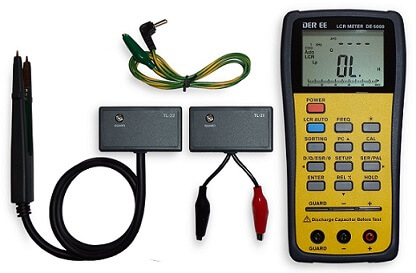
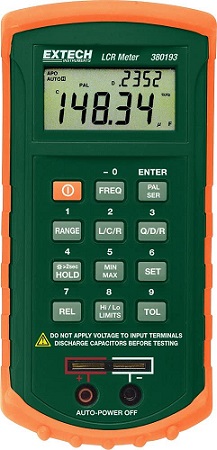
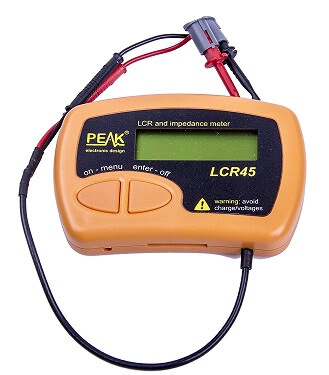
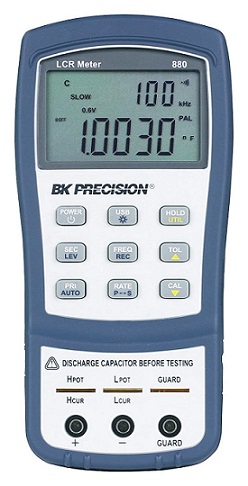
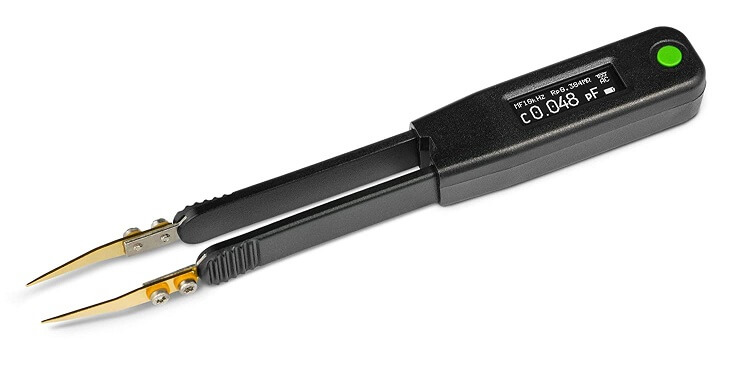


![]()